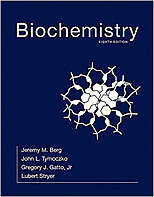
Biochemistry
Berg, Jeremy M.; Tymoczko, John L.; Gatto, Jr., Gregory J.; Stryer, Lubert
8 ed.
New York: W.H. Freeman and Company, 2015
 |
Biochemistry Berg, Jeremy M.; Tymoczko, John L.; Gatto, Jr., Gregory J.; Stryer, Lubert 8 ed. New York: W.H. Freeman and Company, 2015 |
35 termes
| G-6P n. (Glucose 6-phosphate) |
|
| GAL4 n. |
|
| Galdieria sulphuraria [nom cientÝfic] |
|
| gas-phase ion n. |
|
| gastrointestinal peptide n. |
|
| gel pattern n. |
|
| gene knockdown n. |
|
| genetic circuit n. |
|
| genetic difference n. |
|
| genomic method n. |
|
| genomic variation n. |
|
| GGQ sequence n. (glycine-glycine-glutamine sequence) |
|
| gla domain n. |
|
| GlcNAcase n. |
|
| GLP-1 n. (glucagon-like peptide 1) |
|
| glucagon-like peptide 1 n. (GLP-1) |
|
| glucose 6-phosphate dehydrogenase deficiency n. |
|
| glucose sensor n. |
|
| glucose-stimulated insulin secretion n. (GSIS) |
|
| glutamine phosphoribosyl amidotransferase n. |
|
| glycan-binding protein n. |
|
| glycine-glycine-glutamine sequence n. (GGQ sequence) |
|
| glycogen breakdown n. |
|
| glycogen lake n. |
|
| glycogen-binding site n. |
|
| glycogen-storage disease n. |
|
| glycolytic intermediate n. |
|
| good cholesterol n. |
|
| GPCR n. (G-protein-coupled receptor) |
|
| Grb2 n. |
|
| GSIS n. (glucose-stimulated insulin secretion) |
|
| GSK n. (glycogen synthase kinase) |
|
| GTPase activity n. |
|
| guanine-nucleotide-exchange factor n. (GEF) |
|
| guide strand n. |
|